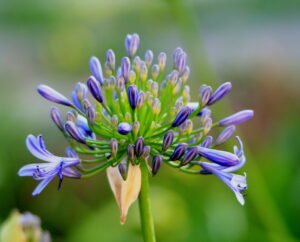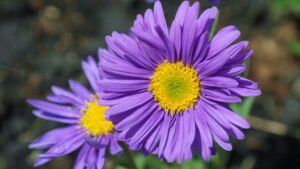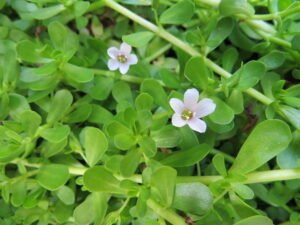How to Grow and Care for Bougainvillea Glabra

Bougainvillea glabra, often called Paperflower, is a lovely flowering plant that can liven up any garden or landscape. This tropical plant, which is native to South America, is well-known for the vibrant bracts that encircle its tiny white flowers. If you’re looking to grow and care for bougainvillea glabra, here are some essential tips to help you succeed.

Bougainvillea glabra is an evergreen flowering shrub. It is popular among gardeners as a bonsai plant.
Some Interesting Facts About Bougainvillea Glabra
Louis Antoine de Bougainvillea, a French explorer, gave the plant its name. It is a genus of prickly shrubs and trees in the Nyctaginaceae family of plants, which is known as the four o’clock family. Meanwhile, Bougainvillea glabra is a species of Bougainvillea also known as paperflower.
Glabra is a Latin word that means “bald.”.
The typical height of mature bougainvillea glabra is 10–12 feet.
The chemical d-pinitol, found in bougainvillea glabra, has insecticidal properties. Therefore, bougainvillea glabra is a useful natural pesticide.
Bougainvillea glabra has medicinal properties. Its leaves and bract extract is used as a home treatment for respiratory disorders, diarrhea, and stomach ache.
Frequently Asked Questions About Bougainvillea Glabra
Is bougainvillea glabra an annual or perennial plant?
Bougainvillea glabra is a perennial plant and can be grown outdoors in warm climates. However, bougainvillea glabra prefers to thrive in pots in regions with harsh winters because it is susceptible to cold. It should be moved indoors during the winter months if there is a danger of frost or snow. The life span of a bougainvillea glabra plant is around 50 years.
Is bougainvillea glabra a sun or shade plant?
Bougainvillea glabra is a hardy plant that thrives in full sun. It requires four to six hours of direct sunshine per day for healthy growth and flowering.
Is the plant bougainvillea glabra poisonous?
Though the leaves of Bougainvillea glabra are not toxic, their sap is mildly toxic. Accidental ingestion of plant sap can cause irritation and bowel movements. Aside from that, it should be mentioned that this is a thorny plant, and handling it carefully is advised.
How to Care for Bougainvillea Glabra
1. Right Location
When selecting a location for your bougainvillea glabra, it’s important to choose a spot that receives full sun for at least six hours a day. This plant thrives in warm and sunny climates, so make sure to provide it with the right conditions. Additionally, ensure that the soil is well-draining to prevent waterlogging, which can lead to root rot.
2. Planting Bougainvillea Glabra
Before planting your bougainvillea glabra, prepare the soil by adding organic matter such as compost or well-rotted manure. This will help improve drainage and provide essential nutrients for the plant’s growth. Dig a hole that is slightly larger than the root ball, place the plant in the hole, and backfill with soil. Water the plant after planting to settle the soil.
3. Watering
While bougainvillea glabra is a drought-tolerant plant, it still requires regular watering, especially during hot and dry periods. Always water the plant deeply, but ensure to allow the soil to dry out slightly between waterings. Avoid overwatering bougainvillea glabra, as this can lead to root rot. Mulching the area surrounding the plant’s base can help control soil temperature and moisture retention.
4. Pruning
Pruning is an essential part of bougainvillea glabra care. It encourages flowering, keeps the plant from being overgrown, and aids in maintaining its shape. Prune your bougainvillea glabra in early spring before new growth begins. After pruning off any damaged or dead branches, reshape the plant as desired. It’s important to wear gloves when pruning, as bougainvillea has thorns.
5. Fertilizing
Regular fertilization is important for the healthy growth and blooming of bougainvillea glabra. Use a slow-releasing, balanced fertilizer designed especially for flowering plants. For flowering, it is recommended to use NPK 10-30-10, which is heavy in phosphorous and low in nitrogen. During the growing season, apply the fertilizer as directed on the package, often every few months. Keep in mind that overfertilizing might result in excessive growth of foliage at the price of blooms.
6. Pests and Diseases
Bougainvillea glabra is generally a hardy plant with few pest and disease problems. Nevertheless, it may be vulnerable to mealybugs, spider mites, and aphids. Regularly inspect your plant for any signs of infestation and treat accordingly with organic or chemical insecticides. Additionally, to avoid fungal diseases, make sure there is adequate air circulation surrounding the plant.
7. Support and Training
As bougainvillea glabra grows, it may require support and training to maintain its desired shape. Use a trellis, fence, or other support structure to guide the plant’s growth. Secure the branches gently using soft ties or twine, being careful not to damage the plant. Make sure the ties are not excessively tight on a regular basis, and make any necessary adjustments.
8. Winter Care
In colder climates, bougainvillea glabra is not frost-tolerant and may require special care during the winter months. If you live in an area with freezing temperatures, consider growing bougainvillea glabra in containers that can be moved indoors during the winter. Place the plant in a bright, cool location, and reduce watering. Protect the plant from drafts and provide occasional misting to increase humidity.
By following these tips, you can successfully grow and care for bougainvillea glabra. With its stunning colors and tropical beauty, this plant is sure to be a standout in your garden or landscape.





